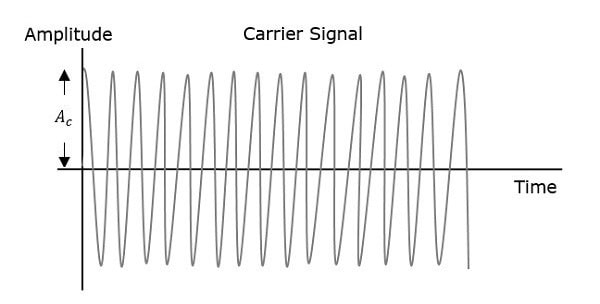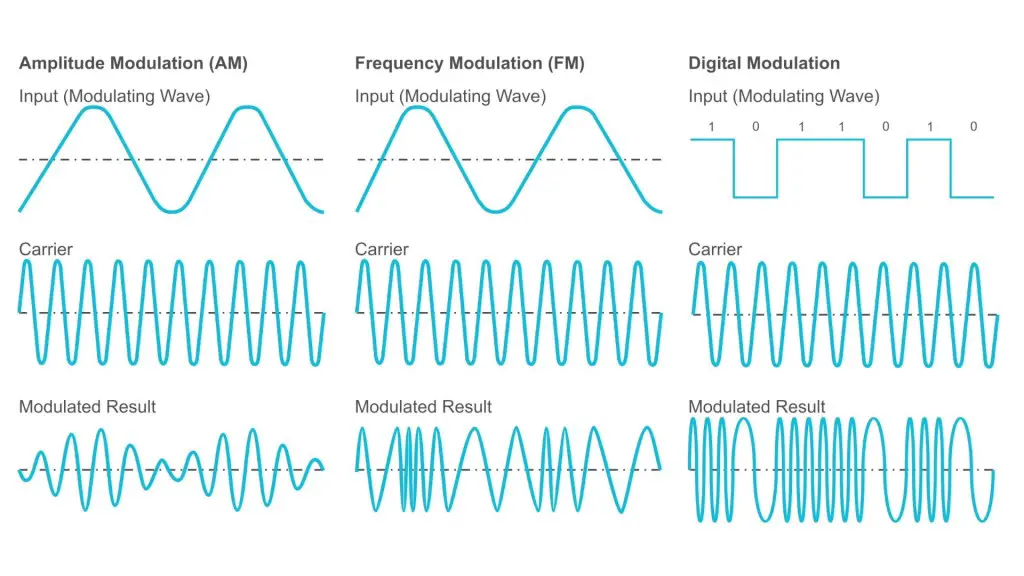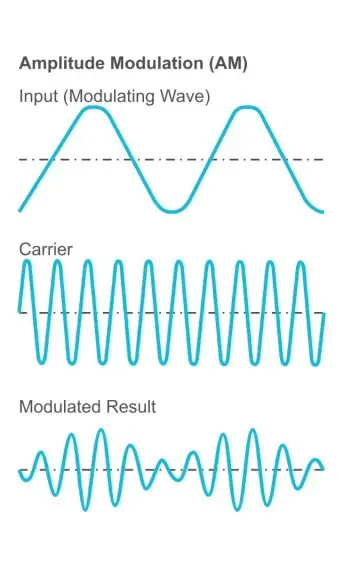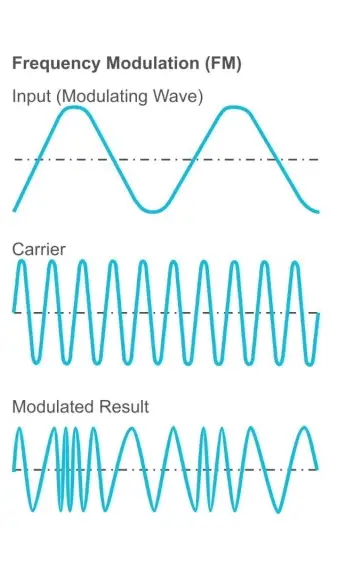Definition of Carrier Signal in Network Encyclopedia.
What is Carrier Signal?
Carrier Signal (or Carrier Wave) is an alternating electromagnetic signal with a steady frequency upon which information is superimposed by some form of modulation.

The specific frequency at which the carrier signal runs is called the carrier frequency and is measured in hertz (Hz).
The modulation of the carrier signal enables information such as voice or data traffic to be integrated into the carrier signal. The carrier signal thus “carries” the voice or data information using modulation technologies.
The type of modulation used in digital communication systems depends upon whether the underlying carrier signal is analog or digital. For example, in digital radio or microwave communication, some form of digital-analog modulation, such as frequency-shift keying (FSK), is used to impose the digital (binary) information on the analog carrier wave. On the other hand, in Ethernet networking, a digital-digital encoding scheme called Manchester coding is used to enable the digital signal to carry binary 1s and 0s.

Carrier Signal is also called Carrier Wave
The term carrier wave originated with radio. In a radio communication system, such as radio or television broadcasting, information is transmitted across space by radio waves. At the sending end, the information, in the form of a modulation signal, is applied to an electronic device called a transmitter. In the transmitter, an electronic oscillator generates a sinusoidal alternating current of radio frequency; this is the carrier wave.
Most radio systems in the 20th century used frequency modulation (FM) or amplitude modulation (AM) to add information to the carrier. The frequency spectrum of a modulated AM or FM signal from a radio transmitter is shown above. It consists of a strong component at the carrier frequency with the modulation contained in narrow sidebands above and below the carrier frequency. The frequency of a radio or television station is considered to be the carrier frequency. However the carrier itself is not useful in transmitting the information, so the energy in the carrier component is a waste of transmitter power. Therefore, in many modern modulation methods, the carrier is not transmitted. For example, in single-sideband modulation (SSB), the carrier is suppressed (and in some forms of SSB, eliminated). The carrier must be reintroduced at the receiver by a beat frequency oscillator (BFO).
So, what is a Carrier Wave?
It’s a pure wave of constant frequency. By itself, it doesn’t carry much information such as voice or data. To include voice or data we need to impose another wave on the top of the carrier: an input signal.
This process of imposing an input signal onto a carrier wave is called modulation.
In other words, modulation is the process of changing the shape of the carrier wave to somehow encode the information we want to transmit, voice or data.
Any wave has three basic properties:
- Amplitude, which is the height of the wave;
- Frequency, which is the number of waves per unit of time;
- Phase, which is the constant that tells us the value of the sine function when t=0 and x=0.
Amplitude Modulation (AM)
We can tweak the height of the carrier. If we create an input signal whose height varies with the loudness of our voice, and we add this to the carrier, then the carrier’s amplitude will change corresponding to the input signal that’s being fed into it.
This is called Amplitude Modulation, or AM.

Frequency Modulation (FM)
Suppose that we change the frequency of an input signal, if we had this input signal to the pure carrier wave, we thereby change the frequency of the carrier wave. In that way, we can use changes in frequency to carry our voice or data information.
This is called Frequency Modulation, or FM.

Carrier Signal in ethernet network
In Ethernet networks, the carrier signal plays an important role in the media access control method that Ethernet uses, namely the Carrier Sense Multiple Access with Collision Detection (CSMA/CD) method.